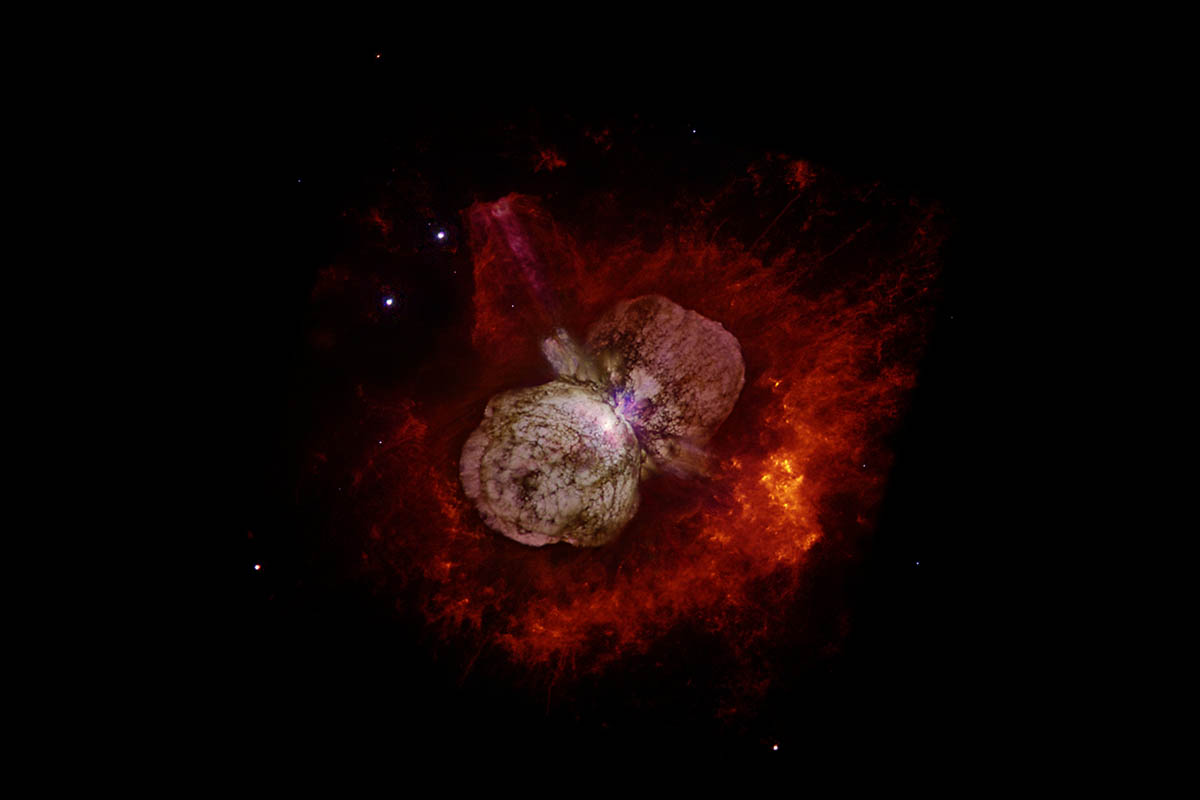Eta Carinae’s great eruption in the 1840s created the billowing Homunculus Nebula, imaged here by Hubble. Now about a light-year long, the expanding cloud contains enough material to make at least 10 copies of our Sun. Astronomers cannot yet explain what caused this eruption. (NASA, ESA, and the Hubble SM4 ERO Team)
Home Eta Carinae’s great eruption in the 1840s created the billowing Homunculus Nebula, imaged here by Hubble. Now about a light-year long, the expanding cloud contains enough material to make at least 10 copies of our Sun. Astronomers cannot yet explain what caused this eruption. (NASA, ESA, and the Hubble SM4 ERO Team) Eta Carinae's great eruption in the 1840s created the billowing Homunculus Nebula, imaged here by Hubble. Now about a light-year long, the expanding cloud contains enough material to make at least 10 copies of our Sun. Astronomers cannot yet explain what caused this eruption. (NASA, ESA, and the Hubble SM4 ERO Team)
Eta Carinae’s great eruption in the 1840s created the billowing Homunculus Nebula, imaged here by Hubble. Now about a light-year long, the expanding cloud contains enough material to make at least 10 copies of our Sun. Astronomers cannot yet explain what caused this eruption. (NASA, ESA, and the Hubble SM4 ERO Team)



